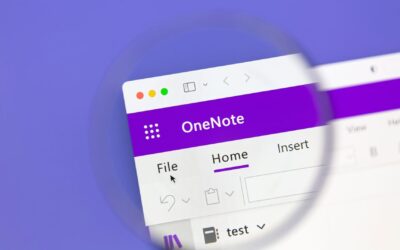If you’ve worked in Microsoft 365 for any length of time, you know the powerful chat and collaboration functions of Microsoft Teams. But did you know the Microsoft Marketplace has more than 2100 different apps and integrations you can use to increase the functionality of Microsoft Teams?
Truly, the options are dizzying, ranging from integrations of familiar to project management and file storage software, to advanced AI modeling tools. The advantage of all these integrations, of course, comes in the convenience. Instead of sharing documents and clicking in and out of programs awkwardly, Microsoft Teams can provide a multi-functional platform where your staff can work and collaborate in a shared space.
Yet, there are complex issues at play when downloading these integrations. Using them isn’t as simple as clicking a few buttons and whipping out the company credit card. Any new function you add to your company platform deserves a serious review and research. This article is designed to help you understand some of those ins and outs.
What Is a Microsoft Teams App/Integration, and How Do You Access Them?
Microsoft describes Teams integrations as “some of the platform’s hidden gems, offering various tools, applications, services, and other third-party solutions into the Microsoft Teams ecosystem.” The integrations enable organizations to integrate different productivity workflows seamlessly into their Teams environment.
To access the Microsoft Teams apps, go to the Microsoft Marketplace. You must log in to Teams with your credentials, navigate to the Apps section, and add the desired integration. Once added, it can be pinned for easy access.
The Microsoft Teams store inside Teams is where you distribute the licenses you’ve purchased to your users worldwide. What kinds of Integrations could be beneficial for your organization? The options are nearly endless. Let’s dig in.
Types of Microsoft Teams Integrations
Microsoft has created an open AI that third-party developers can use to make useful new features and capabilities in Teams. They’ve heard the call. Well-known companies like Zoom and Trello have lined up for integration, as well as lesser-known developers. So, as always, it’s up to your company to vet the integrations coming into your system. Here are some of the categories of Apps and add-ons you’ll find for Teams:
- Compliance: features like data security, audit trails, and reporting that help you stay ahead of regulatory asks.
- AI/Machine Learning: leveraging artificial intelligence and machine learning to automate tasks, provide insights, and enhance user experiences.
- Analytics: providing data visualization, reporting, and analysis tools to help teams make data-driven decisions.
- Collaboration: enhancing teamwork by providing shared workspaces, project management tools, and communication platforms.
- Commerce: facilitating business transactions and operations, such as order management, inventory tracking, and customer relationship management.
- Customer Service: helping teams manage customer interactions, track support tickets, and provide efficient customer service.
- Finance: Assisting with financial management tasks, such as budgeting, forecasting, and financial reporting.
- Human Resources: supporting HR functions like recruitment, onboarding, employee engagement, and performance management.
- Sales: supporting sales processes, including lead management, sales tracking, and customer relationship management.
- Project Management: helping teams plan, track, and manage projects, tasks, and resources.
- Productivity: offering tools and features to enhance productivity, such as time management, task automation, and document collaboration.
- Operations/Supply chain: tracking supply chain processes, including inventory management, logistics, and procurement.
- Marketing: consolidating and administering marketing activities, such as campaign management, content creation, and analytics.
- IT Management: administering IT infrastructure, including network monitoring, incident management, and IT service management.
- Internet of Things: connecting and managing IoT devices, enabling teams to collect, analyze, and act on data from these devices.
How Much Do Microsoft Teams Integrations Cost?
The cost of apps and integrations for Microsoft Teams can vary widely, as various third-party providers develop them. Some apps may be free, while others require a paid subscription. You can purchase licenses for these services through AppSource or the Microsoft Teams admin center. It’s best to check the specific pricing details for each app in the Teams admin center or on the app’s page on AppSource.
If the integration you’re using is complex or system-wide, there may be some consulting fees involved on your end as well to vet and manage the integration. Check with your IT department to make sure you’ve thought it through.
With so many apps available, which ones should your organization try? The answer is different for every organization. Let’s talk about some of the more popular options.
Some Top Microsoft Teams Integrations to Consider
Microsoft Teams enhancements can move your organization forward in unexpected ways. Obviously, with thousands of app enhancements available, the list we’ve provided below is hardly comprehensive. However, these apps are popular because they have broad appeal for lots of different kinds of businesses. Take some time to explore the app store—especially those apps that are explicitly configured for specific industry verticals. If you’re in a heavily regulated industry such as banking, healthcare, or legal, you’ll find Teams apps specifically designed to harden your data handling and compliance operations.
ServiceNow:
ServiceNow’s integration with Microsoft Teams provides a platform for users to manage their projects and tasks. It allows users to share critical customer data, onboard sophisticated notifications, and connect teams with their essential enterprise data56.
Hive:
Hive’s integration with Microsoft Teams allows teams to manage their projects flexibly and efficiently. It provides various project views such as Gantt charts, Kanban boards, tables, calendars, and updates.
isLucid:
isLucid’s integration with Microsoft Teams enables users to create tasks and action items from spoken conversations and, importantly, uses AI to accurately capture what’s done during meetings.
WooBot:
WooBot allows users to onboard sophisticated Salesforce notifications, share essential customer data, streamline workflows, and connect teams with their critical enterprise data.
Microsoft Dynamics 365 for Sales:
Integrating Microsoft Dynamics 365 for Sales with Microsoft Teams enables users to make and receive calls, view, and collaborate on customer records within a Teams chat or channel.
Lucid Chart:
Lucid Chart’s integration with Microsoft Teams allows users to share and collaborate on visuals directly within Teams. It enables real-time collaboration on diagrams, flowcharts, and other visuals, making complex ideas more accessible to communicate12.
Teamwork:
Famous project management system Teamwork rolled out an integration to enable detailed project tracking within the Teams interface.
Translator:
Never worry about the language barrier with the Translator app, which translates in real-time during Teams meetings and chats.
This is just a taste of what you can find in the Microsoft Teams Marketplace. It’s easy to get excited about the possibilities. Yet, if you’re ready to click the “buy” button, we’d urge you to take a step back first. New apps often mean new risks. You’ll need comprehensive research to understand the implications for your organization.
What to Consider Before You Install Microsoft Teams Integrations
While the apps we’ve mentioned here have tremendous potential, please do not consider them direct endorsements by Integris. Your IT team should thoroughly vet every program that runs on your company’s platforms. If you have an MSP that offers you cybersecurity consulting, even better. A CISSP-certified cybersecurity expert can help you understand the implications of these new tools.
During that vetting process, they’ll want to know:
- Who needs to have the enhancement, and how many seats need to be purchased
- Whose budget will cover the enhancement, and how will it be billed
- How the program interacts with others you may be using
- Whether it impacts the cybersecurity and data security frameworks your company already has in place
- How employees need to be trained to use the enhancement
- How the enhancement will affect your written cybersecurity policies and procedures
Always give your IT team fair warning so they can take some time to analyze any potential risks and create protocols for your internal service teams to view and troubleshoot the app. Are you interested in building out your Microsoft 365 tools? We’d love to help with your IT enterprise. Contact us today for a free consultation.



